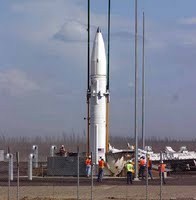In the absence of a NATO heads-of-state summit this year, the regular meetings of the alliance’s defense ministers take on added importance. This past week’s meeting in Brussels on Oct. 22-23 yielded important achievements regarding the Connected Forces Initiative, but offered little new to say on Afghanistan, Russia or NATO’s core capability initiatives. The meeting was also overshadowed by fallout over revelations of U.S. National Security Agency surveillance of American allies as well as Turkey’s decision to award a missile defense contract to a sanctioned Chinese company. To avoid having such controversies distract from next year’s heads-of-state summit, or have that summit’s success rest wholly on the status of the unpredictable Afghan War, the allies need to make concentrated progress on cyberdefense and missile defense in coming months.
The progress on NATO’s little-known Connected Forces Initiative was the most noteworthy outcome of the meeting. The initiative aims to ensure that NATO preserves its hard-won capacity to fight as an integrated force on extended campaigns outside of the alliance’s traditional trans-Atlantic area of responsibility, even after most NATO combat troops withdraw from Afghanistan in 2014. NATO has also conducted recent major missions in Kosovo and off the coast of Somalia, but the tempo of these collective operations is declining as well. NATO leaders wisely agreed to conduct a major live exercise in 2015 involving significant land, sea and air forces, to take place simultaneously in Italy, Portugal and Spain. The allies will also hold similarly large-scale live exercises on a regular basis in following years.
In the absence of ongoing combat operations, regular exercises will be essential for keeping the NATO war machine in a fit state for its next potential major deployment, even if major components of the exercises are in fact conducted virtually on computers. They will also prove vital for maintaining the network of global partnerships that NATO has developed in the decade it has led the International Security Assistance Force in Afghanistan, which will end next year. NATO will invite nonmember partner countries to join some of its planned drills. Regular exercises will also help elevate the alliance’s profile at a time when conflicts in Asia and the Middle East are dominating headlines. Partially compensating for its Asia pivot and the continued drawdown of U.S. forces in Europe, the United States has agreed to rotate a battalion-sized force to Europe twice each year to train with NATO’s multinational Response Force and other NATO units.

